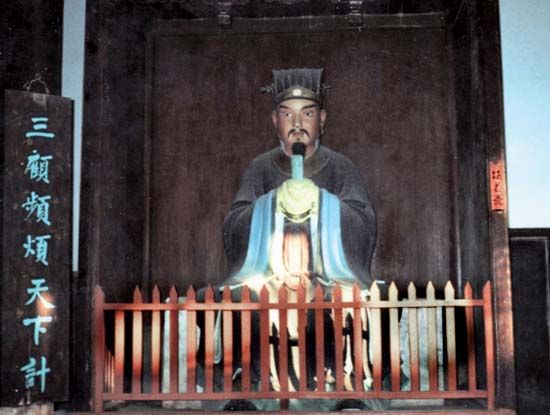Zhuge Liang
Zhuge Liang (born 181, Yangdu [now Yinan, Shandong province], China—died August 234, Wuzhangyuan [now in Shaanxi province], China) was a celebrated adviser to Liu Bei, founder of the Shu-Han dynasty (221–263/264).
Zhuge, to whom supernatural powers often are ascribed, has been a favoured character of many Chinese plays and stories. Legend states that Liu Bei, then a minor military figure, heard of Zhuge Liang’s great wisdom and came three times to the wilderness retreat to which Zhuge had retired to seek him out as an adviser. It is known that Zhuge helped Liu organize a large army and found a dynasty. Liu was so impressed with Zhuge’s wisdom that on his deathbed Liu urged his son to depend on Zhuge’s advice and urged Zhuge to ascend the throne himself if the prince were unable to rule. Some historical accounts indicate that Zhuge died from illness while leading a military campaign in 234.
A mechanical and mathematical genius, Zhuge is credited with inventing a bow for shooting several arrows at once and with perfecting the Eight Dispositions, a series of military tactics. In the Sanguozhi yanyi (Romance of the Three Kingdoms), the great 14th-century historical novel, Zhuge is one of the main characters; he is portrayed as being able to control the wind and foretell the future.











